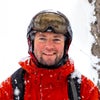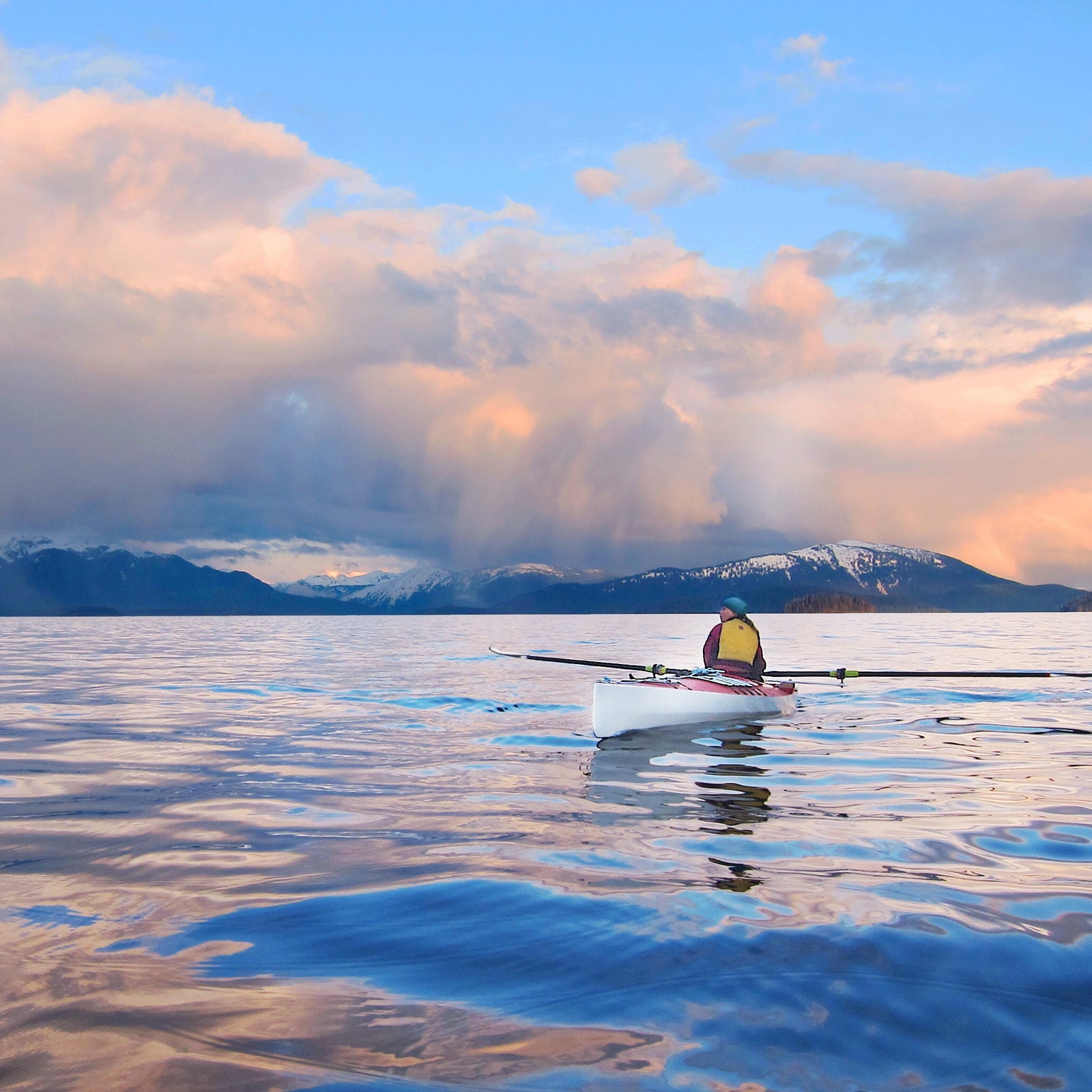Early in her memoir ($15; Little, Brown Spark), ornithologist introduces readers to one of those wonderful German words with no English equivalent that expresses a sentiment so perfectly you want to print it on a T-shirt. Zugunruhe, meaning “migratory restlessness,” is usually attributed to birds in the springtime. “For birds, the urge to move can’t be contained,” writes Van Hemert. After an early career spent at remote field camps, the homegrown Alaskan found herself office-bound, nearing the completion of her Ph.D. and staring down a series of big life questions about what comes next. She knew from her own past experience that sometimes movement is the best way to think things through. “I had Zugunruhe in a big way,” she writes.
Van Hemert’s solution was to undertake an adventure on the scale of an avian migration: a 4,000-mile, self-powered journey by rowboat, foot, skis, pack raft, and even a little swimming, from Bellingham, Washington, to Kotzebue, Alaska, by way of the , the Yukon, the Arctic coast, and the Brooks Range. The voyage took Van Hemert and her husband, Pat Farrell, six months to complete. What happened in between is recounted beautifully in The Sun Is a Compass, published earlier this spring. The book is a gripping tale of hardships endured and natural wonders encountered but also something more: a coming-of-age journey and a search for answers to the big life questions that dog us all, no matter what form our restlessness takes.
Van Hemert was raised by parents who summited Denali together before she was born and who later indoctrinated her and her siblings in climbing, skiing, camping, and hiking. “For my parents, the outdoors offered a version of church that provided clarity without demanding a particular form of allegiance,” she writes. Van Hemert and Farrell, himself an avid climber and outdoorsman from upstate New York, worship at the same altar. Farrell made his way to Alaska at 19, walked into a spruce forest, and hand-built a log cabin that he then lived in for a year before going to art school in Bellingham, where he and Van Hemert met. She soon went back with him to visit the cabin and came away impressed. They embarked on their first big adventure together in 2002, when they were dropped off at the head of a river in Canada’s Northwest Territories with tools, but no boat, and built a spruce-bark canoe nicknamed Sprucey that they paddled 300 miles. Other adventures followed, including marriage and constructing a stunning off-the-grid cabin together on a remote beach near Haines, Alaska. “Wilderness,” she writes, “has become the silent third partner in our marriage.”
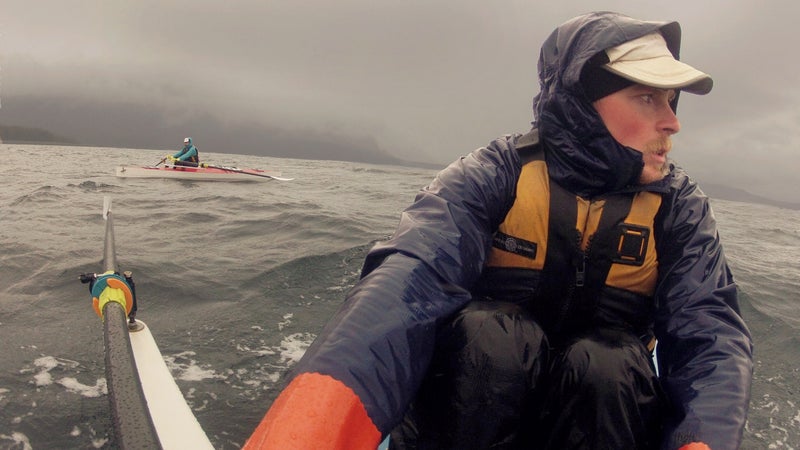
But by 2011, they were living a relatively sedentary life in Anchorage, where Farrell was building custom homes and Van Hemert, then 33, was finishing her Ph.D. on . She found that, like many a field scientist shackled to a desk before her, she wasn’t sure she wanted an academic career. Add to that two deaths of people close to her, her father’s diagnosis with early-stage Parkinson’s disease, and the looming question of whether to have children, and it’s no wonder she began pining for “the solitude and silence of the river, the sure purpose of each day.” And it was, it seemed to them, now or never. “We knew our bodies wouldn’t stay strong forever,” Van Hemert writes. “Inevitably, our responsibilities would grow; our freedom would shrink.”
Their route follows one they’d sketched out in theory years earlier and called, grandly, the Trans North America. They were already an accomplished adventure duo, but this trip would require all the toughness and resourcefulness they could muster, from the logistics, route planning, and packing to the actual travel through infrequently visited and sometimes unmapped areas, stacking high-mileage days one after another for half a year. The trip starts with one major hurdle, considering their goal of rowing the Inside Passage: “In all of our frantic preparations for the trip, we had neglected perhaps the most important one of all—learning to row.”
But in that, as in everything else, they found a way forward. The tale skips along, as they stop over at their cabin near Haines before continuing up and over the Coast Range on skis and foot, dropping down into the headwaters of the Yukon, floating down it, crossing the Tombstone Mountains, and getting ravaged by mosquitoes in the McKenzie River delta before emerging on the Arctic coast. They walk and paddle the coast, eventually turn south, cross the Brooks Range, and paddle the length of the Noatak River before arriving in Kotzebue.
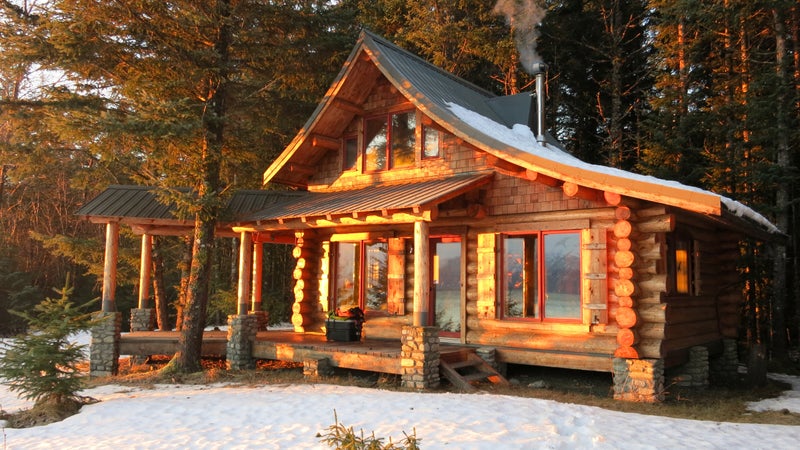
There is no shortage of hardship or frightening moments, including a confrontation with a black bear that leaves them badly shaken—“I’m discovering what it means to be hunted,” she writes—and a dicey swim to cross a swollen river that she recounts in the book’s opening. Van Hemert is candid about the errors in decision-making that can afflict even experienced adventurers. “It takes only half an hour for us to realize we have made a mistake,” she writes, in one of the many uh-oh passages. In this instance, they’ve underestimated the fickle temper of the Arctic Ocean’s near shore shallows and overestimated their pack rafts’ seaworthiness. As the waves build, they struggle to stay afloat, and she glances over at Farrell as he’s hit by a succession of big waves. “Then he topples into the icy sea,” she writes. “As he goes under, I feel the air leave my lungs. All I can see now is the bottom of his raft.” They make it to land, struggle out of wet clothes, and warm up, but Van Hemert is left wondering, “What if?”
Through it all, they persevere. “No matter how ugly,” she writes, “what I see in front of me is the only way forward.” It is a testament to their resiliency that they keep putting one foot in front of the other, for which they are rewarded with front-row seats to sublime moments. After enduring near starvation due to a delayed food drop, they end up perfectly timed to intersect with a caribou migration, hiding in a stand of willows while thousands of the reindeer stream by toward a river crossing. “‘This is the single most amazing thing I’ve ever seen,’ Pat mouths to me,” she writes.
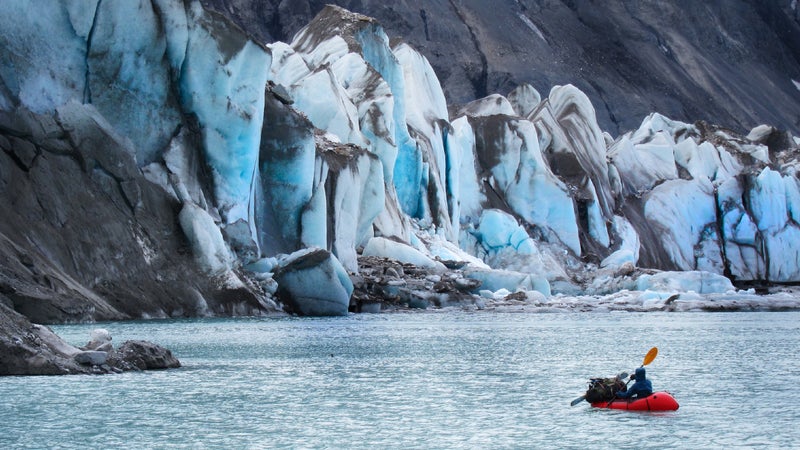
The bookshelf of Alaskan adventure tomes is long and distinguished, groaning beneath the weight of so many journeys taken and lessons learned. Van Hemert belongs on the shelf for sheer audacity of vision alone, and while her book doesn’t approach the heights reached by the masters, she writes engagingly and is an able guide, shifting between scientist and human, head and heart, reason and emotion. As a scientist, she writes especially well on the fascinating secret lives of birds, about which she’s able to teach us a great deal without losing the thread of her story. There are clichés and science-teacher pedantism—“our watery blue earth is a small piece of something much larger than we will ever comprehend”—but such moments are relatively few.
While narrating the journey, the writing around her interactions with others is particularly wooden early on. The people they meet along the way, and even her husband, are stick-figures who are no more than signposts on her solipsistic quest. But as the book rolls along and gains momentum, those early hiccups recede and her intention clarifies. She seems to understand something new about the story she’s writing, which is really about two people on the cusp of adulthood taking a journey with each other, and within themselves, toward some greater depth of relationship. It’s about moving from concern with self to concern for others, from narrowly focused definitions of what a successful life looks like to a broader understanding of its unpredictability and beauty. It’s about the paramount importance of both seeking out personal challenges and surrounding ourselves with people who enable our best impulses and curb our worst. By the end, Van Hemert realizes that “this journey is as much about human connections as it is about wilderness.”
As they near the completion of their voyage, Van Hemert nails the preemptive nostalgia that often arrives as you close in on some long-sought goal: the impulse to take just one more photo, savor just one more sunset, live one more moment of focused bliss before returning to the splintered consciousness of our daily lives. Eight miles from their adventure’s end in Kotzebue, they decide to camp one last night, even though they could make town easily. “Suddenly I don’t want to leave. I don’t want to arrive. I want to stay put, waiting here with the swans,” she writes. In those moments, memory of the suffering evaporates, leaving what you’ve sought all along—clarity. The next question is: How do you bring those lessons back with you, to the routines that threaten to swamp even the best of intentions? One finishes the book suspecting that, for Van Hemert and Farrell, adulthood and children might change the tenor of the adventures, but won’t stop them.

